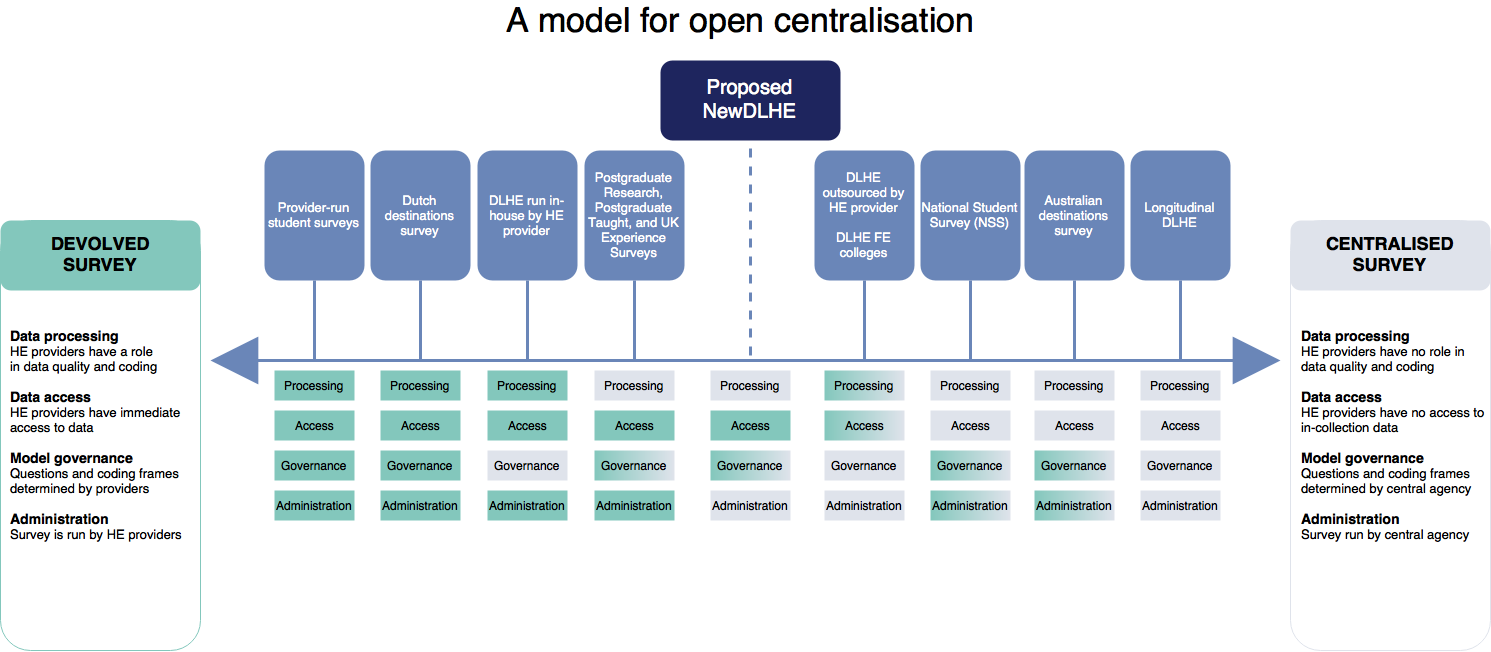Facilitating the effective transition of students into the labour market is one of the top policy priorities in higher education at the moment. To support this HESA is currently spearheading a major review of the data we collect around graduate destinations – the NewDLHE review.
NewDLHE will gather rich and robust data to provide comprehensive and nuanced insights into the HE sector and the graduate labour market. Following a major consultation stage, we are now working on the design phase of the review, building up recommendations that we will be publishing and seeking your support for. These will include full information about the design of the survey, the technicalities of how the survey will run, and timescales.
Our role in leading this review has been to consider how to ensure that we collect the right data and adopt the best approaches to collecting this data. We continue to be guided by the aims of the review: to design a survey which is future-proof, efficient, supports legislation, and has a fit-for-purpose methodology. We also want to ensure that the growing number of users of the survey data can have full confidence in its quality and robustness.
The need for more robust data
A key aim of this review is ensuring that we gather data which is perceived as objectively impartial and of a high standard. We know there are anecdotes of occasional low trust in the current DLHE dataset. While this has been partially addressed through data quality checks and audit processes, these have not confounded concerns about a lack of consistency across the 261 HE providers running the survey. Whether these perceptions are fair or not, ensuring trust in the data is vital.
To address these concerns, we are currently undertaking an Official Statistics appraisal of DLHE using the UK Statistics Authority’s toolkit. A report will be published in the next couple of weeks, but our initial understanding is that the current methodology does not offer comprehensive assurance. Given the high level of public interest in the DLHE data, it is essential that this robust standard is met by the reformed NewDLHE.
Introducing a central survey
As part of our aim to achieve impartial data of a high standard, we have explored various options around the design of the survey, but have concluded that recommending a form of open centralisation for the NewDLHE model will best achieve these goals.
Although responses were split when our consultation asked about the benefits of centralising data collection, we have interrogated the reasons behind objections and sought advice from the NewDLHE Strategic Group. They agreed that the main arguments against a central survey system could be overcome by effective survey design, and the group has decided to work towards a model of open centralisation. We have discussed with the working group and sector representative bodies what this might look like, and how it could work in practice.
Our work on the design phase has taught us that the term ‘centralisation’ is heterogenous and can refer to many points on a spectrum between full-centralisation and full-devolution. For NewDLHE, we are adopting existing best practice from other student surveys currently conducted in the UK to design a new model for a collaborative and openly centralised survey.

Values of the NewDLHE
In designing a new centralised model, will aim to protect three key features of the current survey:
- High response rates. We are seeking to do this through gathering best practice in survey design (including technological advances), designing open and answerable questions, utilising linked data to avoid asking questions on salaries and further study, and enabling personalisation of the contact methods to suit individual providers.
- Allowing higher education providers to continue to offer post-graduation support to alumni. Our model will be designed to promote close connections between the survey organisation and providers to allow for careers services to offer support to struggling graduates.
- Giving providers rapid access to their data. We are exploring the possibility of deploying a dashboard to allow providers to interact with the submitted survey responses in close to real time.
Next steps
Our recommendations for the NewDLHE model will be published next month. We’re currently developing the detail of how the model will work, focusing on five key areas: governance, methodologies, linking data, data supply, and the new survey’s financial model. Our recommendations, to be published at the end of next month, will include further information about these points and a complete model of the proposed survey.
Join the conversation on Twitter using #NewDLHE












